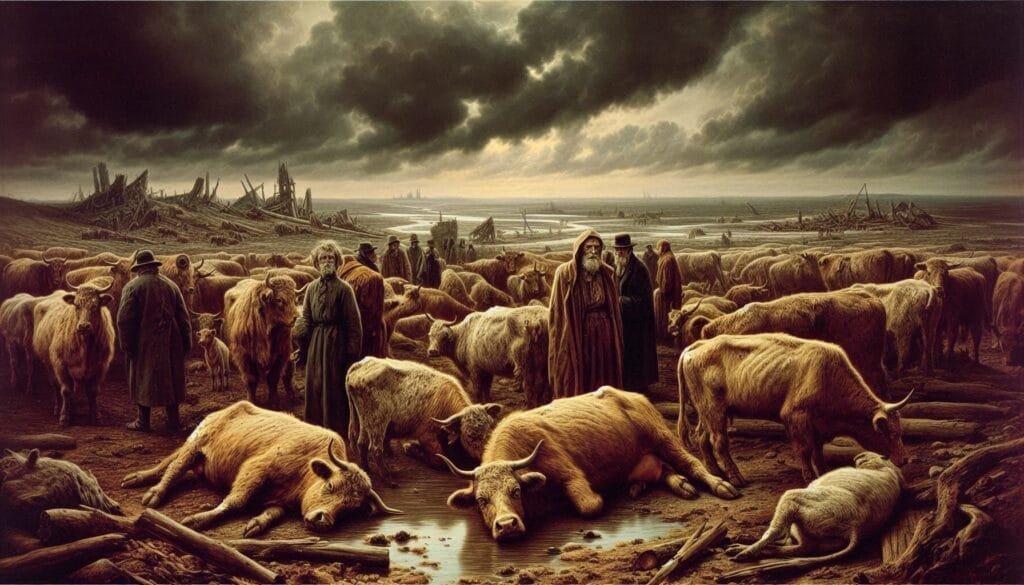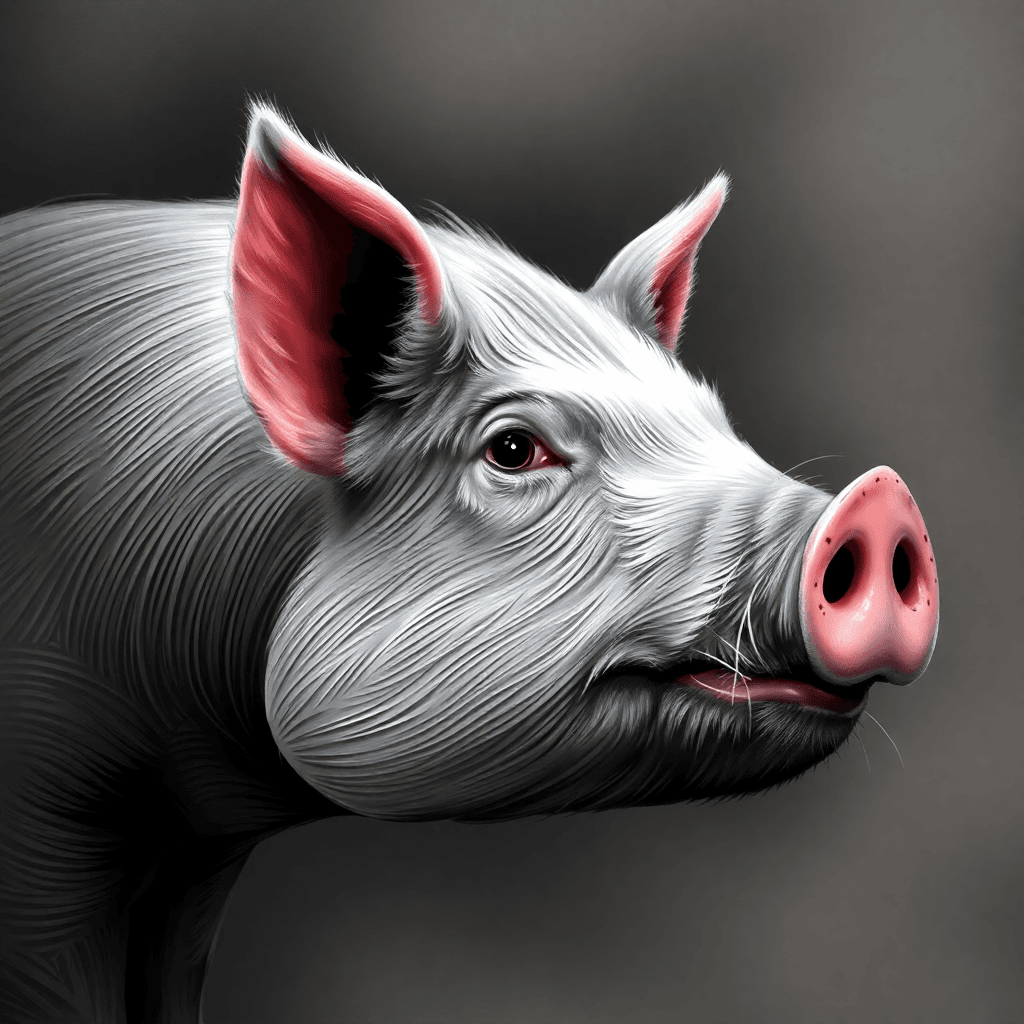Rinderpest: The Cattle Plague and Its Eradication

Introduction to Rinderpest
Rinderpest, often referred to as cattle plague, was a highly contagious viral disease that primarily affected cloven-hoofed animals. This included cattle, buffalo, sheep, and goats. The disease was caused by the rinderpest virus, which belongs to the Morbillivirus genus. This virus is closely related to those causing measles in humans and canine distemper in dogs.
Historically, rinderpest had catastrophic effects on livestock populations and human societies. The disease led to severe economic losses and food shortages in many regions. Fortunately, through global efforts, rinderpest was declared eradicated in 2011. This achievement marked a significant milestone in veterinary medicine and public health.
For more detailed information on rinderpest history, you can refer to the Britannica article on Rinderpest.
Understanding Rinderpest Symptoms
Common Symptoms of Rinderpest
Rinderpest presented a range of symptoms that could be alarming for livestock owners. Recognizing these signs early was crucial for controlling outbreaks. Here are some common symptoms:
- Fever: Infected animals typically developed a high fever.
- Oral Lesions: Sores appeared in the mouth, leading to excessive drooling.
- Nasal Discharge: Mucus discharge from the nose was common.
- Diarrhea: Animals often experienced severe diarrhea, which could be bloody.
- Lethargy: Infected animals showed signs of weakness and reluctance to move.
For more detailed information on symptoms and diagnosis, you can refer to the World Organisation for Animal Health (OIE).
Stages of Infection
Rinderpest infection progressed through several stages:
- Incubation Period: This period lasted about 5 to 10 days after exposure.
- Acute Phase: Symptoms became apparent during this phase. Fever and oral lesions were prominent.
- Severe Phase: Animals often succumbed to severe diarrhea and dehydration during this stage.
Understanding these stages helped veterinarians manage outbreaks effectively.
Transmission of Rinderpest
How Rinderpest Spreads
Rinderpest primarily spread through direct contact between infected and susceptible animals. The virus could also be transmitted via contaminated feed or water sources. Aerosol transmission occurred but was typically limited to short distances.
Risk Factors for Transmission
Several factors increased the risk of rinderpest transmission:
- High Population Density: Crowded conditions facilitated rapid spread.
- Movement of Animals: Transporting infected animals contributed to outbreaks.
- Lack of Vaccination: Unvaccinated herds were particularly vulnerable.
To learn more about disease transmission in livestock, visit the Food and Agriculture Organization (FAO).
Historical Impact of Rinderpest
Economic Consequences
The impact of rinderpest on agriculture was profound. In many regions, livestock served as a primary source of food and income. Outbreaks led to:
- Livestock Deaths: Millions of animals died due to the disease.
- Food Shortages: The loss of cattle resulted in reduced meat and milk production.
- Economic Decline: Farmers faced financial ruin as their livelihoods were destroyed.
Social Consequences
The social ramifications were equally severe. Communities reliant on livestock for sustenance faced hunger and poverty. Historical records indicate that rinderpest outbreaks contributed to famines in various parts of Africa and Asia. For an in-depth look at historical outbreaks, check out this article from Oxford Research.
Global Eradication Efforts
The Rise of Vaccination
The development of an effective vaccine was pivotal in combating rinderpest. In the 1960s, scientists created a vaccine that significantly reduced infection rates. Vaccination campaigns began in many affected countries.
International Collaboration
Global cooperation played a crucial role in eradicating rinderpest. Organizations like the FAO and OIE worked with governments to implement vaccination programs and surveillance systems.
Successful Eradication
The last confirmed case of rinderpest occurred in 2001 in Kenya. Following extensive vaccination efforts, the FAO declared rinderpest eradicated in 2011. This marked a historic achievement as it became the first animal disease eradicated globally.
For more information on global health initiatives against animal diseases, visit the World Health Organization (WHO).
Lessons Learned from Rinderpest Eradication
Importance of Vaccination
The success against rinderpest underscores the importance of vaccination in controlling infectious diseases. Vaccination not only protects individual animals but also helps prevent outbreaks within populations.
Need for Surveillance Systems
Effective surveillance systems are essential for early detection of diseases. Continuous monitoring allows for quick responses to potential outbreaks.
Global Cooperation is Key
Rinderpest eradication demonstrated that international collaboration is vital for addressing global health issues. Countries must work together to share resources and knowledge.
Current Status and Future Implications
While rinderpest has been eradicated, other animal diseases still pose threats to livestock health worldwide. Continued vigilance is necessary to prevent future outbreaks.
Ongoing Challenges
Some challenges include:
- Emerging Diseases: New pathogens may arise that threaten livestock.
- Climate Change: Changing climates can affect disease dynamics.
- Resource Allocation: Ensuring adequate resources for vaccination campaigns remains crucial.
Moving Forward
To build on the success of rinderpest eradication, stakeholders must prioritize animal health initiatives globally. Investing in research and development will help combat emerging threats effectively.
For further reading on animal health strategies, explore articles from the Centers for Disease Control and Prevention (CDC).
Conclusion
Rinderpest was a devastating disease that impacted livestock populations worldwide. Its eradication stands as a testament to what can be achieved through vaccination, surveillance, and international cooperation. As we move forward, it is essential to apply the lessons learned from rinderpest to prevent future outbreaks of animal diseases.
By understanding the history and impact of rinderpest, we can better prepare for challenges ahead in animal health management.
For more pearls of Vets Wisdom:
Estimating Sires: Progeny Testing and Threshold Models






Responses